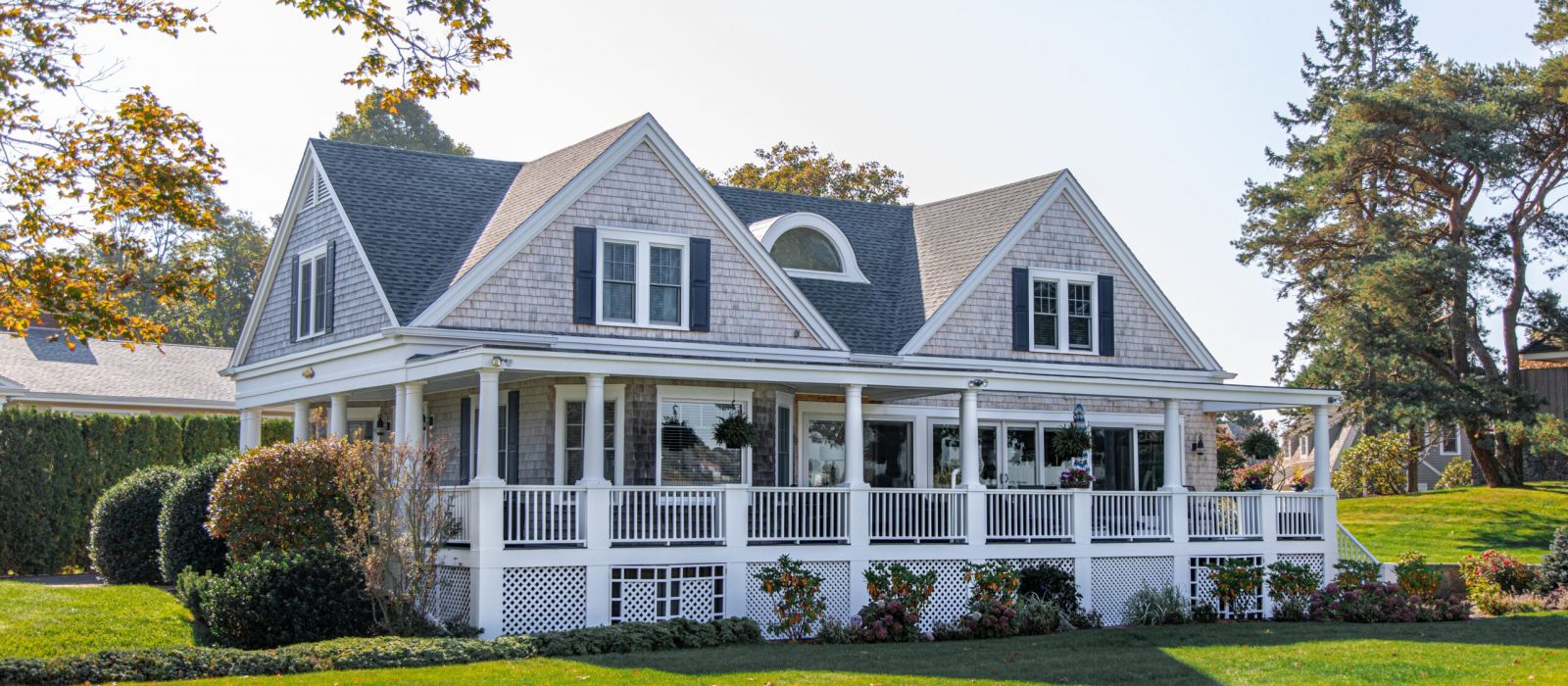Building Your Future Starts With Budgeting for It

If you’re like most Americans, you’ve spent years—decades, even—saving money for retirement. When it gets down to brass tacks, however, you haven’t really thought about how you’re going to spend that money. You may have vague notions that you need housing and health care, or that you want to be active and travel, but you’d be hard-pressed to say whether your resources will actually support your goals, or for how long.
That’s OK. Everyone has to start somewhere. And if you or a loved one is thinking about moving to a senior living community, understanding what the costs are and how they’re structured is as good a place to start as any.
Before you start crunching numbers, there are a few things you should understand.
- Costs need context. When you begin assessing the costs of senior housing, it’s normal to feel something akin to sticker shock. But big numbers are rarely as large as they initially seem. When you consider what expenses they encompass and over what period of time, and compare that to the equivalent cost of living outside of senior housing, you’ll often determine that the price tag is more affordable than it appeared on first glance.
- Senior living is not one-size-fits-all. If you browse the web, talk to friends and family members who have firsthand experience, or commence discussions with specific communities, you might blush at the numbers. But it’s important to keep in mind that those are not your numbers. The truth is, senior living communities boast a wide variety of options at a wide variety of price points in order to appeal to as many potential residents as possible. Before you commit to living in a senior living community—or rule the prospect out—it’s important to examine your unique needs and resources. Then and only then can you paint a complete financial picture.
- Communities can help you navigate your options. Senior living communities have specialized staff and software that can help you assess the affordability of senior housing based on your age, assets and monthly income from Social Security, pensions, investments and other resources. If there is a divide between your resources and your goals, they might be able to draw on their daily experience working with residents of diverse means to suggest avenues and ideas that can help you bridge any gaps.
It’s right to be thinking about the cost of senior living communities. Before you rush to judgment, however, use this guide to get a general sense of what expenses you might encounter and what services you’ll get in return. Once you’ve acquired some basic literacy about the financial aspects of senior housing, you can begin the process of determining what your situation may require and what the impact might be on your family, finances and lifestyle.

Understanding what the costs are and how they’re structured is as good a place to start as any.

1. Housing Costs
For most of your adult life, you’ve probably had a rent or mortgage payment. Although it might be called something different, you’ll have a similar housing payment when you live in a senior living community. How much that payment is and how it’s structured will vary from community to community based on factors such as community size, location and type— for example, an independent living community where residents are entirely self-sufficient, an assisted living community where residents may receive assistance with activities of daily living, a memory care community that furnishes specialized care for people with Alzheimer’s disease or other forms of dementia, or a skilled nursing facility that offers 24/7 medical care.
RENTAL COMMUNITIES
In some senior living communities, like independent living communities, residents might sign traditional leases that are similar in terms and cost to those of a conventional apartment. Leases might be month-to-month or annual, and might include a security deposit and/or move-in fee that’s typically equal to one month’s rent. Sometimes, amenities and services are ad hoc. Other times, residents enter into a residence and service agreement that encompasses both rent and various onsite services for a single monthly sum. This is especially common in assisted living, memory care and skilled nursing communities. Although rental housing tends to be more affordable up front, it tends to be less predictable and can be more expensive over time since services are extra.

OWNERSHIP OR EQUITY COMMUNITIES
In an ownership- or equity-style senior living community, residents purchase their unit, pay real estate taxes on it and are responsible for its upkeep, just like a traditional home. They may pay additional homeowners association dues in exchange for certain amenities, and may have access to additional services, like assisted living, for an additional daily or monthly fee. Equity arrangements may be attractive for estate planning purposes, but provide no relief from the burdens of homeownership.
Equity arrangements may be attractive for estate planning purposes, but provide no relief from the burdens of homeownership.

LIFE PLAN COMMUNITIES
Also known as continuing care retirement communities (CCRCs), life plan communities offer myriad levels of care on the same campus in order to accommodate seniors as they age. In exchange for long-term stability and flexibility, they typically charge a significant “entrance fee”—basically, a down payment that must be paid prior to moving in, which often is funded with proceeds from a home sale. Entrance fees can be non-repayable or repayable. The former are lower but non-refundable if a resident moves out or passes away. The latter, on the other hand, are higher but offer generous repayment in the event of a move or death, which can be attractive for estate planning purposes. Although the initial price tag may appear large, the long-term value often exceeds the short-term investment.

2. Monthly Service Fees
Whether you pay them in the form of monthly rent or upfront entrance fees, housing costs typically cover only the roof over your head. Some senior living communities fold an array of services and amenities into that cost; others charge a separate monthly service fee. Make sure you know what’s included and what isn’t in any discussion you’re having with a community! Like the fees themselves, the services they include will vary from community to community. However, they might include things like:
- Meals and dining
- Utilities
- Home maintenance and repairs
- Housekeeping
- Laundry services
- Local transportation
- Fitness facilities
- Resort-style amenities like swimming pools and putting greens
- Organized social activities and entertainment
- Nursing services in case of mild illness or injury
Often, communities offer other amenities and services that are paid out of pocket as needed—for example, dry cleaning, an onsite beauty salon, extra housekeeping services or extra meals for visitors.
Keep in mind that because of inflation and other economic variables like the cost of gas and food, monthly service fees may increase over time—typically by less than 5 percent per year. Fortunately, services often can flex with one’s budget. In many cases, for example, services can be customized to residents’ needs. A resident who prefers to cook their own meals in their residence, for example, might pay a lower service fee than a resident who desires a meal plan in the dining hall.
Make sure you know what’s included and what isn’t in any discussion you’re having with a community.

3. Health Care Costs
As they age, older adults often need increased medical assistance and services. Although it can be difficult if not impossible to predict one’s future needs, more support naturally translates into greater expense.
Some senior living communities offer residents a means to mitigate those financial risks by offering onsite health care services whose costs are built into the community’s monthly service fees, thereby allowing residents to lock in low prices for future care. This is the case, for example, in life plan communities, which typically offer multiple contract options for residents who may need health care support now or in the future. Some residents may elect to pay a higher monthly fee that promises to cover all their needs over time, regardless of what level of care they need. Other residents may elect to pay graduated monthly fees that start small but grow as their needs increase. Still others may desire a monthly fee that remains consistently low, in which case they’ll pay ad hoc for higher levels of care should they ever need them.
Some senior living communities—especially those owned by nonprofit organizations—may offer benevolence programs and subsidies for qualifying residents, who may be able to continue receiving care if health care costs deplete their assets. And most communities offer social, fitness and wellness programs that can keep residents’ future health care costs in check by keeping their bodies strong, their minds sharp and their spirits high.
Although it can be difficult if not impossible to predict one’s future needs, more support naturally translates into greater expense.

Aging in Place Isn’t Free
As you contemplate the costs of a senior living community, it’s natural to wonder, “Wouldn’t it be cheaper to continue living in my home?” The answer might surprise you.
Here’s why: When you’re crunching the numbers for senior housing, you must consider not only what expenses you will have, but also what expenses you won’t have. Depending on what type of senior living community you select and what services it offers, you might be able to eliminate the following expenses from your monthly budget:
- Mortgage payments
- Homeowner’s insurance
- Property taxes
- Landscaping
- Cleaning services
- Car payments, auto insurance, maintenance and fuel costs
- Utilities
- Groceries
- Entertainment
That’s just the beginning. You also will eliminate spending on home maintenance and repairs—including expensive replacements of your roof, hot water heater, appliances and HVAC equipment, all of which have expiration dates. There are home modifications, too: If you age in place, you’ll eventually have to spend money making your home safe for an older adult to live in. If you move to a senior living community, however, safety upgrades like ramps and bathroom grab bars already will be installed at no expense to you. And don’t forget about health care. If you age in place, you may eventually need in-home assistance and medical services, which don’t come cheap. Seniors who do the math in order to compare what they’ll spend with what they’ll save often discover that a senior living community is just as affordable—and sometimes even more so—than aging in place.
When you’re crunching the numbers for senior housing, you must consider not only what expenses you will have, but also what expenses you won’t have.

So, Should You Move into a Senior Living Community?
Whether to move into a senior living community is a decision that seniors and their loved ones often make with the heart. But a decision of such import can’t be made on gut feelings alone. You also have to listen to the numbers.
That requires facts. To get them, make a list of your current resources and expenses, then speak with the sales counselors at prospective communities in order to get a complete and accurate picture of the scenarios available to you, what they’ll cost and what options exist for financing them. Finally, meet with your financial advisor in order to compare current resources and expenses with prospective needs and costs. From that, you should gain a good understanding of whether you can move into a senior living community, at which point you can finally consult your heart for an answer to the question you began with: Should you?
Navigate
